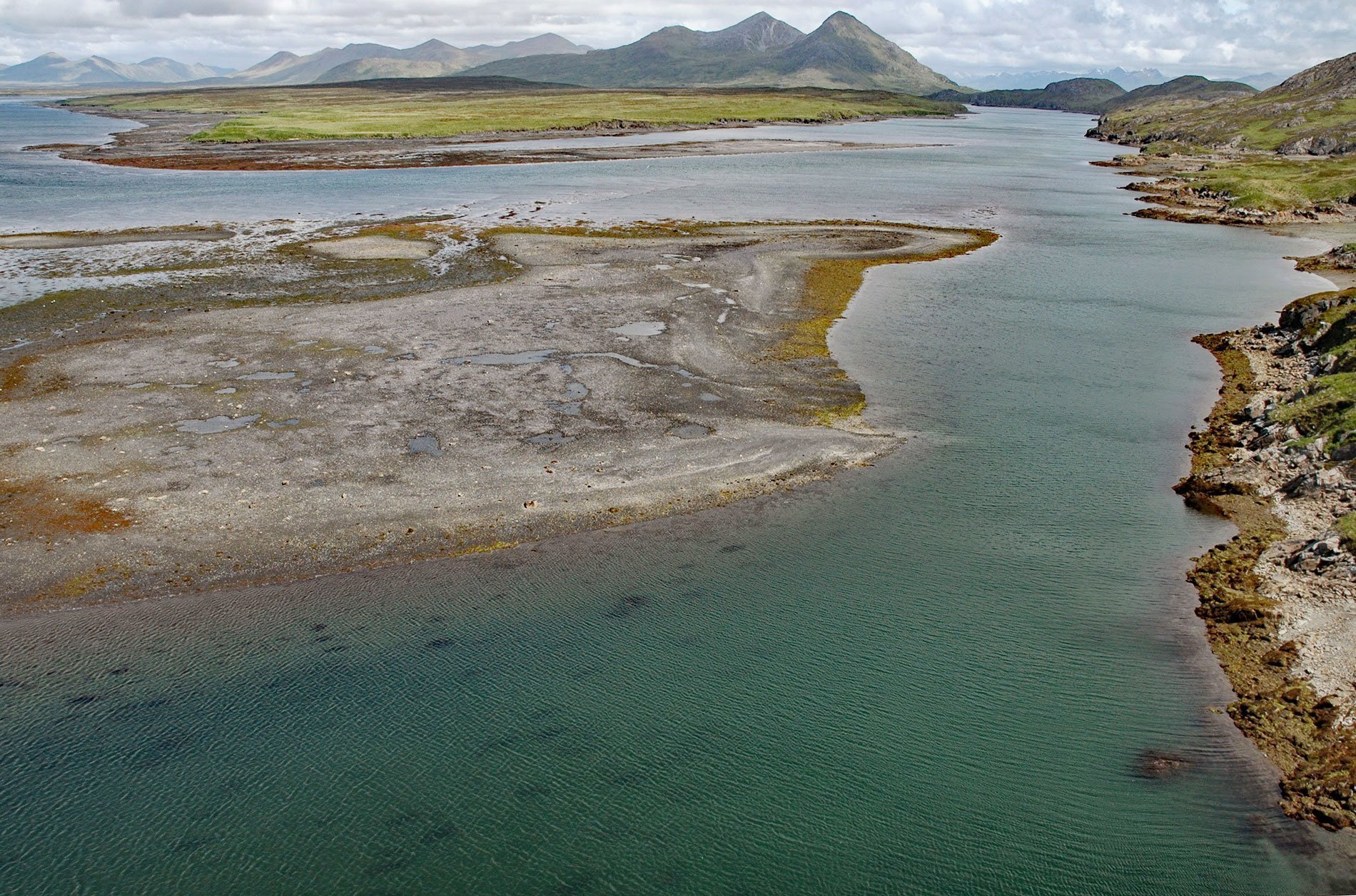Alitak Lagoon is 4 miles (6.5 km) long and about 3 miles (4.8 km) west of Alitak Bay, 1 mile (1.6 km) northeast of Cape Alitak at the south end of Kodiak Island, 93 miles (150 km) southwest of the community of Kodiak, Alaska. The name is derived from Cape Alitak and was first published in 1934 by the U.S. Coast and Geodetic Survey.
Cape Alitak is a point of land on Tanner Head, an island about 4.2 miles (6.8 km) long, connected to Kodiak Island by a barrier beach 4.3 miles (6.9 km) long. The island was named for Lieutenant Commander Zera Luther Tanner in 1900 by J.F. Moser of the U.S. Navy, who was the commander of the Albatross. The cape is an extension of Tanner Head, from which it is separated (except for a barrier beach on the west) by Rodman Reach a part of Alitak Lagoon. The cape is bounded on the east by Alitak Bay, on the west by the southern end of Shelikof Strait, and on the south by Sitkinak Strait which separates Kodiak Island from the Trinity Islands.
The cape has long been known for its remarkable collection of prehistoric petroglyphs, which include a wide variety of shapes, some of animals and humans, and others of apparently abstract geometric figures. The cape was surveyed in detail in 2011 by archaeologists from the Alutiiq Museum in Kodiak, at which time 13 different petroglyph locations were identified, along with evidence of prehistoric habitation of the area. The petroglyph site was listed on the National Register of Historic Places in 2013. Read more here and here. Explore more of Alitak Lagoon here:

